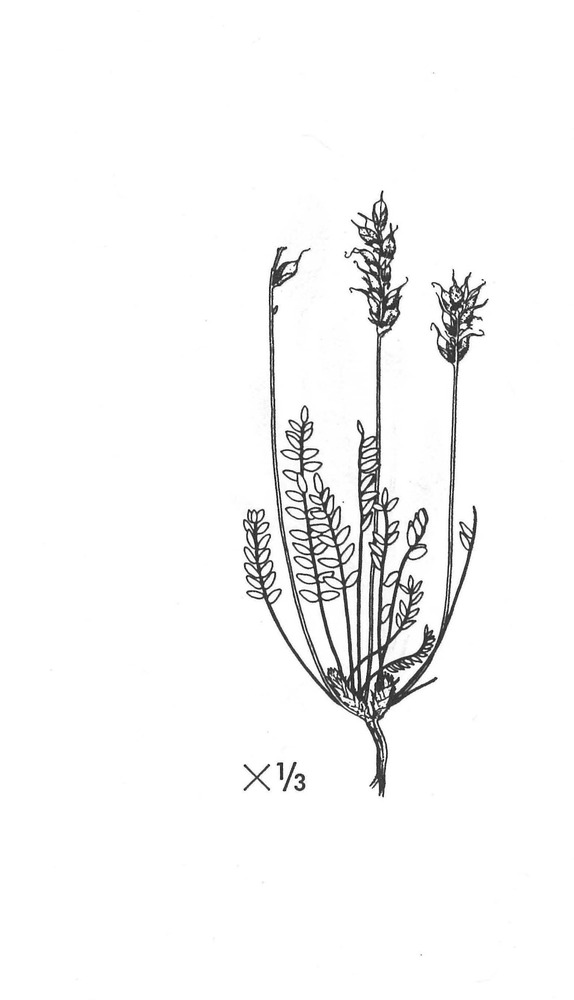| Oxytropis campestris subsp. gracilis (Nels.) Hult. | |||
| |||
| Family | Leguminosae — APG family: Fabaceae | ||
| Synonyms | Aragallus gracilis Nels., Oxytropis campestris var. varians (Rydb.) Barneby, Oxytropis gracilis (Nels.) Schum., Oxytropis varians (Rydb.) Hult., Aragallus varians Rydb., Oxytropis campestris var. gracilis (Nels.) Barneby, Oxytropis hyperborea Pors., Oxytropis alaskana Nels. | ||
| Description | Caespitose, with branching caudex more or less covered with disintegrated stipules; leaves 15-35 (—45)-foliate; leaflets lance-elliptic to oblong, opposite or verticillate, pilose on both sides; stipules lanceolate, acuminate, pilose dorsally, the margins ciliate and beset with more or less numerous short, thick, sometimes clavate processes; raceme many-flowered, capitate when young, elongating in age; calyx villous with dark and light hairs; corolla whitish, yellowish, or purple-tinged; pod erect, sessile, pilose. | ||
| Ecology | Dry, sandy places. O. campestris described from the island of Oeland (Sweden), Germany, and Switzerland; subsp. gracilis from Weston County, Wyoming. | ||
| Taxonomy notes | On the circumpolar map, the range of the entire species complex is indicated (though incomplete in Asia); subsp. gracilis occupies the western American range. |
This is a digital representation of Eric Hultén’s ‘Flora of Alaska and Neighboring Territories: A Manual of the Vascular Plants’, which was published by Stanford University Press in 1968. The book was digitized by C. Webb (at UAMN) as part of the Flora of Alaska project, with funding by the US NSF (Grant 1759964 to Ickert-Bond & Webb), and with permission of Stanford University Press. Data and images © 1968 Board of Trustees of the Leland Stanford Jr. Univ. Usage licence: Creative Commons BY-NC-SA 4.0. NB: You may find OCR errors; please refer to the hard-copy if in doubt.
